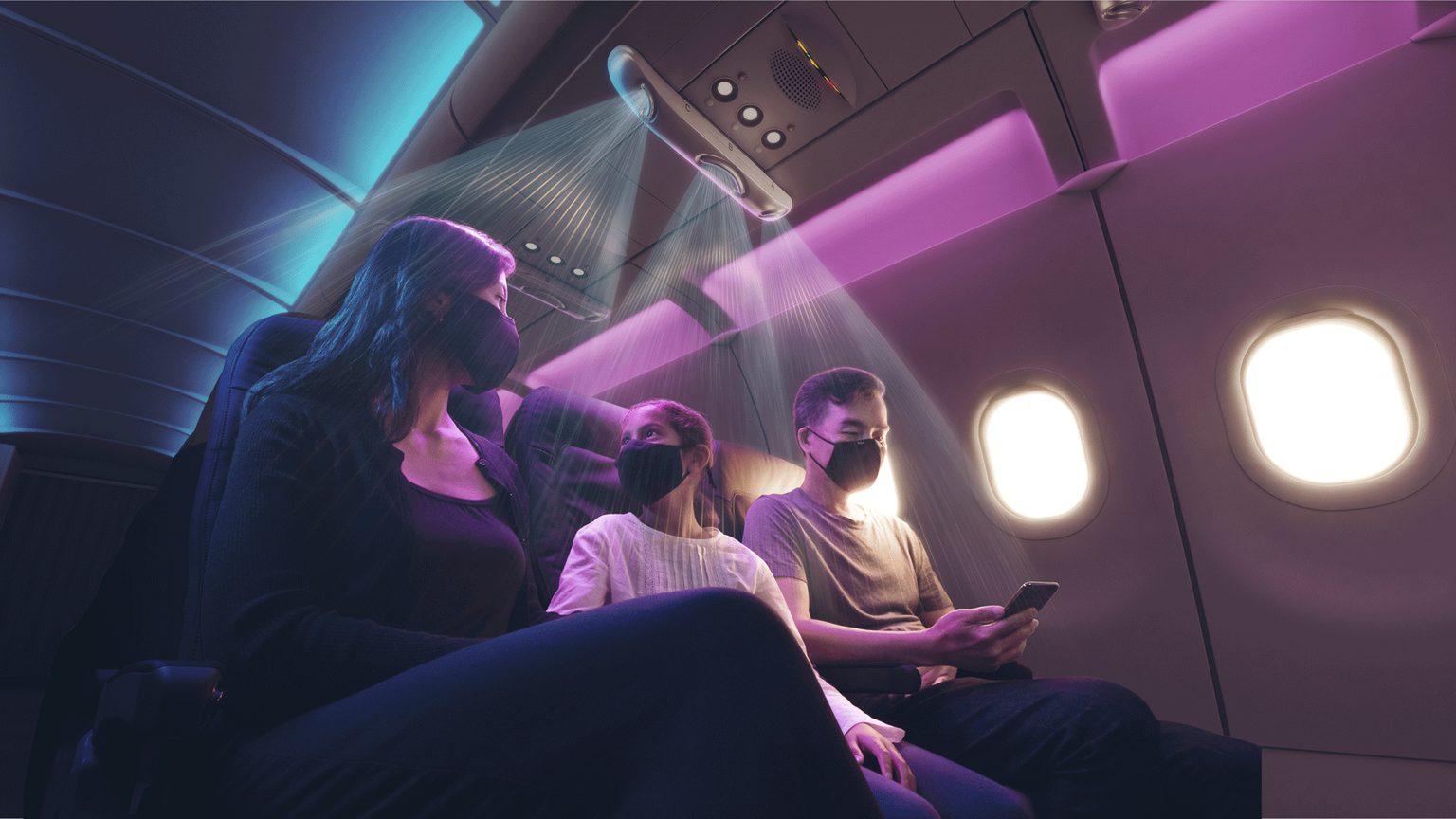
Aviation

AirShield Cabin-Air Safety Device
Category
As airlines face an uphill battle in recovery from Covid-19, Teague offers a simple solution designed to restore passenger confidence in commercial air travel.
Challenge
Built environments often shape the spread of disease; crowded gathering places such as airports, hospitals, churches, and schools are perfect virus transmission sites. Social distancing is one of the most effective methods of combatting the spread of highly contagious viruses. And while many environments are easily adapted to maintain a safe distance between people, airplane cabins, with a fixed layout, require special considerations to ensure passenger safety.

APPROACH
Commercial airplanes are one of the safer transportation options. HEPA air filters ensure that recycled air quality and sanitation levels are high; however, the path of immediately exhaled water vapor droplets in the aircraft cabin environment wields the potential for virus spread. While the cabin airflow helps reduce the risk of large-scale virus spread on board, it does little to protect those sitting within a few seats of an unwell passenger.
Teague conducted six months of research and dynamic modeling to explore the most effective way to reduce airborne viral transmission onboard an airplane.
To better understand airborne particles' movement in the cabin, our team of mechanical engineers recreated A320 and B737 airflow environments using Computational Fluid Dynamics (CFD), some of the most advanced digital simulation tools available. We found that the vertical flow divides the cabins in half, creating a lingering swirl of air between neighboring passengers in all directions. By simulating the movement of respiratory particles in one breath (velocity 1.5m/s) from the window, middle, and aisle seats, we identified significant potential for lateral transmission between passengers. Our CFD simulations and fog testing illustrated similar results—that the lateral barriers created by AirShield effectively prevent the transmission of respiratory droplets from row to row and between neighboring passengers.
Download the AirShield White Paper
To achieve optimum performance, we developed AirShield through a series of digital and physical prototypes. In addition to achieving optimal effectiveness as a barrier between passengers, we purposefully designed AirShield to be quiet, discreet, and harmoniously integrated into the cabin.

Solution
AirShield is a cabin-air safety device that re-purposes the airflow from the existing overhead air vents to create protective air barriers around and in-between each passenger in an airplane cabin.
Like the air curtains installed in the entryways of restaurants or retail outlets during winter months, this laminar profile of airflow creates a barrier around each seat that disrupts the normal circulation of air. When a passenger breathes, coughs, or even sneezes, the water vapor is contained within that passenger space and is immediately redirected downwards and out of the cabin to the HEPA filtration units before it has the opportunity to enter the personal space of a neighboring passenger.
AirShield works alongside existing cabin airflow infrastructure to restrict the spread of exhaled particles. The device's nozzle design is inspired by industrial air-knives' geometry with nozzle-tips that harness the 'Bernoulli principle,' drawing in the surrounding cabin air and doubling the resulting airflow. Developed in partnership with three of the world's leading airlines, AirShield easily integrates into existing cabin architecture, with each implementation customized based on PSU geometry, cabin styling, and seating layout.
Designed to be visible at all times and from anywhere in the airplane cabin, AirShield acts as a visual cue for passengers, making them feel more comfortable and more confident while flying.

AirShield offers an additional line of defense in managing the spread of viruses in air-travel, whether that be something as serious as coronavirus or as simple as the common cold.
Anthony Harcup
Senior Director of Airline Experience | TEAGUE
RESULT
Pexco Aerospace acquired AirShield in May 2022; the product is expected to be certified by the Federal Aviation Administration (FAA) in the coming months and was honored with the prestigious Crystal Cabin Award.
As the coronavirus pandemic unfolded across the globe, we prioritized solving the issue of shared particles on a commercial aircraft to support airlines' confident return to service. Our learnings, however, can be effectively applied to other forms of public transportation or any built environment; it's possible to 'blade' a variety of social spaces, from buses and trains to retail and restaurants. We see the future of air-conditioning, ventilation, and air circulation having a vital role in creating healthier and safer environments.